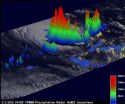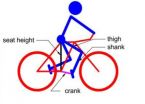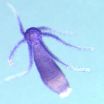(Press-News.org) Tropical Cyclone 15S has had a difficult "childhood." It was born on March 1 and immediately dealt with a harsh environment. The cyclone weakened within 24 hours to a remnant low pressure area, and NASA's TRMM satellite revealed there was still some strength remaining in the storm.
The Tropical Rainfall Measuring Mission (TRMM) satellite passed over the remnants of Tropical Cyclone 15S in the South Indian Ocean on March 2, 2012 at 0140 UTC (8:40 p.m. EST, March 1). A rainfall analysis from TRMM's Microwave Imager (TMI) and Precipitation Radar (PR) instruments showed very heavy rainfall of over 50mm/hr (~2 inches) was occurring near the center of the storm's circulation.
TRMM's Precipitation Radar (PR) was used to create a 3-D image of the remnants of Tropical Cyclone 15S' structure. Powerful thunderstorm towers in the middle of the remnant low were seen to reach heights of over 17.5 (~10.9 miles). "Another indication of heavy rainfall was that radar reflectivity values of 53.770 dBz were found in this area of the tropical cyclone," said Hal Pierce of the TRMM satellite team at NASA's Goddard Space Flight Center in Greenbelt, Md. where the images were created.
The Joint Typhoon Warning Center issued their final warning on Tropical Cyclone 15S on March 1 at 2100 UTC (4 p.m. EST) when its maximum sustained winds were near 30 knots (34.5 mph/55.5 kph). It was located about 460 nautical miles (529 miles/852 km) northeast of Port Louis, Mauritus at that time. That's near 15.3 South and 63.7 East.
On March 2, Tropical Cyclone 15S's remnants were located near 16.4 South and 63.2 East, approximately 400 nautical miles (460 miles/~741 km) northeast of Port Louis, Maritius. Infrared satellite imagery showed that strong convection (rising air that forms the thunderstorms that make up a tropical cyclone) was occurring near the center of the low pressure area. In the southwestern quadrant of the low, however, the air was sinking (subsidence) so thunderstorm development was being prevented.
Satellite data also showed that the low-level center was elongated from northwest to southeast, as a result of an upper level trough (elongated area) of low pressure.
The remnants of Tropical Cyclone 15S are expected to keep tracking west and may re-develop as wind shear weakens and it moves through warm sea surface temperatures. The Joint Typhoon Warning Center gives the remnants a medium chance of regaining tropical depression status over the weekend of March 3 and 4, 2012.
INFORMATION:
NASA's TRMM satellite sees remnants of Tropical Cyclone 15S's 'difficult childhood'
2012-03-05
ELSE PRESS RELEASES FROM THIS DATE:
The future of plant science – a technology perspective
2012-03-05
Washington, D.C. -- Plant science is key to addressing the major challenges facing humanity in the 21st Century, according to Carnegie's David Ehrhardt and Wolf Frommer. In a Perspective published in The Plant Cell, the two researchers argue that the development of new technology is key to transforming plant biology in order to meet human needs.
Plants serve as the conduit of energy into the biosphere, provide food and materials used by humans, and they shape our environment. According to Ehrhardt and Frommer, the three major challenges facing humanity in our time are ...
When your ship comes in
2012-03-05
Every day, thousands of cargo containers from around the world pass through our nation's sea ports carrying items we need, and possibly some that are not so welcome: drugs, explosives, chemical, biological, or radiological weapons – even human cargo.
The possible concealment of such items in containers led lawmakers to call for the screening of all ocean cargo containers—thousands per port per day. The Department of Homeland Security's (DHS) U.S. Customs and Border Protection (CBP) is charged with the critical task of securing the country from terrorists and their ...
A new optimum design method of bicycle parameters for a specified person
2012-03-05
The optimum design of bicycle parameters has been explored by many scholars and institutes since bicycles were first invented. Professor Xin-Jun Liu and his group at Tsinghua University established a new way to design bicycle parameters according to the dimensions of the rider's body. They introduced a new perspective of the rider–bicycle system by considering the complete system as a mechanism. The group then established a new method for the optimum design of bicycle parameters from a completely theoretical basis, which may result in a new field of optimum design of bicycle ...
National Sleep Foundation poll explores transportation workers' sleep
2012-03-05
WASHINGTON, DC, March 3, 2012 – The people we trust to take us or our loved ones from place to place struggle with sleep, according to the National Sleep Foundation's (NSF) 2012 Sleep in America® poll. It is the first poll to ask transportation professionals, including pilots, train operators,* truck, bus, taxi and limo drivers about their sleep habits and work performance.
Pilots and train operators are most likely to report sleep-related job performance and safety problems.
The results of the poll are striking. About one-fourth of train operators (26%) and pilots (23%) ...
Ice hockey feels the heat in Canada
2012-03-05
The future of Canadian outdoor ice hockey – a sport synonymous with the country's culture – is being threatened by anthropogenic climate change, new research suggests.
As warmer winter temperatures restrict ice from freezing over, researchers believe the ice hockey stars of the future will have limited access to the frozen lakes and backyard rinks that have helped shape the careers of some of the greatest professional players, such as Wayne Gretzky; the Canadian considered to be the greatest of all time who started skating as a child on a rink in his backyard.
Evidence ...
Study shows brain flexibility, gives hope for natural-feeling neuroprosthetics
2012-03-05
Berkeley – Opening the door to the development of thought-controlled prosthetic devices to help people with spinal cord injuries, amputations and other impairments, neuroscientists at the University of California, Berkeley, and the Champalimaud Center for the Unknown in Portugal have demonstrated that the brain is more flexible and trainable than previously thought.
Their new study, to be published Sunday, March 4, in the advanced online publication of the journal Nature, shows that through a process called plasticity, parts of the brain can be trained to do something ...
Boosting cell production could help treat liver disease
2012-03-05
Scientists have shed light on how the liver repairs itself with research that could help develop drugs to treat liver disease.
Researchers at the Medical Research Council (MRC) Centre for Regenerative Medicine at the University of Edinburgh have discovered how to enhance the production of key cells needed to repair damaged liver tissue.
The study, published in the journal Nature Medicine, could help heal livers affected by diseases such as cirrhosis or chronic hepatitis.
Scientists were able to unpick the process of how different cells in the liver are formed.
When ...
Keep smiling: Collagen matrix promotes gum healing around exposed roots
2012-03-05
Receding gums often result in tooth sensitivity and can lead to decay of the root and persistent inflammation of the gum. New research published in BioMed Central's open access journal Head & Face Medicine demonstrates that a novel method using bovine collagen is able to enhance gum healing. This resulted in thicker margins around the tooth and, in over half the cases, complete coverage of exposed roots.
Researchers across Germany and Switzerland led by Dr Shahram Ghanaati and the dentist Dr Markus Schlee investigated the possibility of using collagen, extracted from ...
Seeing without eyes: Hydra stinging cells respond to light
2012-03-05
In the absence of eyes, the fresh water polyp, Hydra magnipapillata, nevertheless reacts to light. They are diurnal, hunting during the day, and are known to move, looping end over end, or contract, in response to light. New research published in BioMed Central's open access journal BMC Biology shows that stinging cells (cnidocytes) in hydra tentacles, which the animals use for self protection and to catch prey, are linked via a simple nervous system to primitive light responsive cells that co-ordinate the animals' feeding behavior.
Hydra are members of a family of radially ...
Does your mother know?
2012-03-05
Do your parents know where you are at night? According to 36 per cent of 15 year old boys and nearly a quarter of 15 year old girls the answer to that question, at least once a month, is no.
This is the finding from Understanding Society, a long term study of 40,000 UK households, which asked more than 2,000 10-15 year olds how frequently they stayed out past 9.00pm without their parents knowing where they were. The study, which is funded by the Economic and Social Research Council (ESRC), also found that staying out late without telling your parents is unrelated to ...



